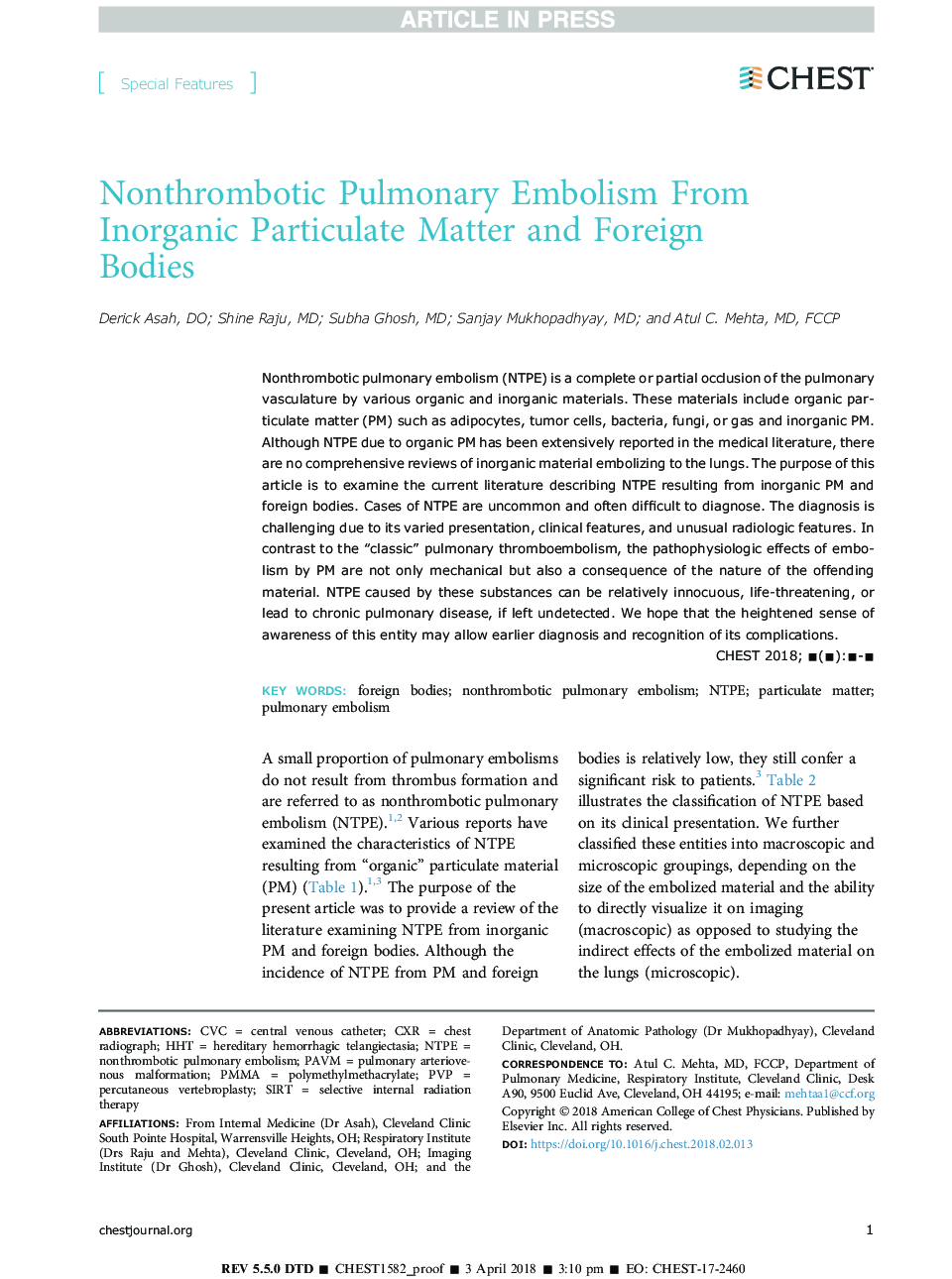| Article ID | Journal | Published Year | Pages | File Type |
|---|---|---|---|---|
| 8657889 | Chest | 2018 | 17 Pages |
Abstract
Nonthrombotic pulmonary embolism (NTPE) is a complete or partial occlusion of the pulmonary vasculature by various organic and inorganic materials. These materials include organic particulate matter (PM) such as adipocytes, tumor cells, bacteria, fungi, or gas and inorganic PM. Although NTPE due to organic PM has been extensively reported in the medical literature, there are no comprehensive reviews of inorganic material embolizing to the lungs. The purpose of this article is to examine the current literature describing NTPE resulting from inorganic PM and foreign bodies. Cases of NTPE are uncommon and often difficult to diagnose. The diagnosis is challenging due to its varied presentation, clinical features, and unusual radiologic features. In contrast to the “classic” pulmonary thromboembolism, the pathophysiologic effects of embolism by PM are not only mechanical but also a consequence of the nature of the offending material. NTPE caused by these substances can be relatively innocuous, life-threatening, or lead to chronic pulmonary disease, if left undetected. We hope that the heightened sense of awareness of this entity may allow earlier diagnosis and recognition of its complications.
Keywords
Related Topics
Health Sciences
Medicine and Dentistry
Cardiology and Cardiovascular Medicine
Authors
Derick DO, Shine MD, Subha MD, Sanjay MD, Atul C. MD, FCCP,
